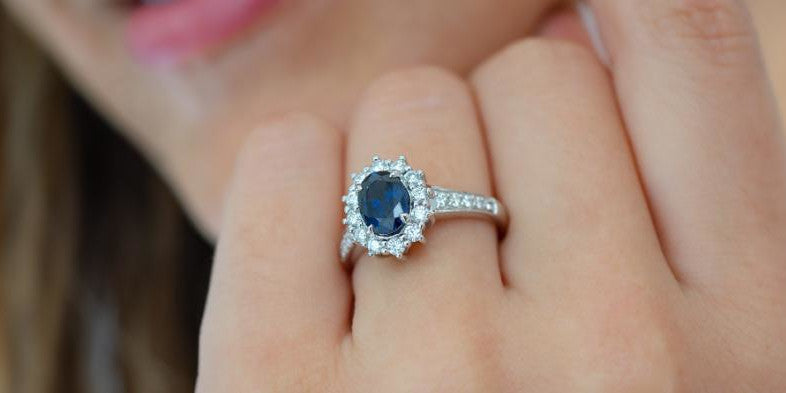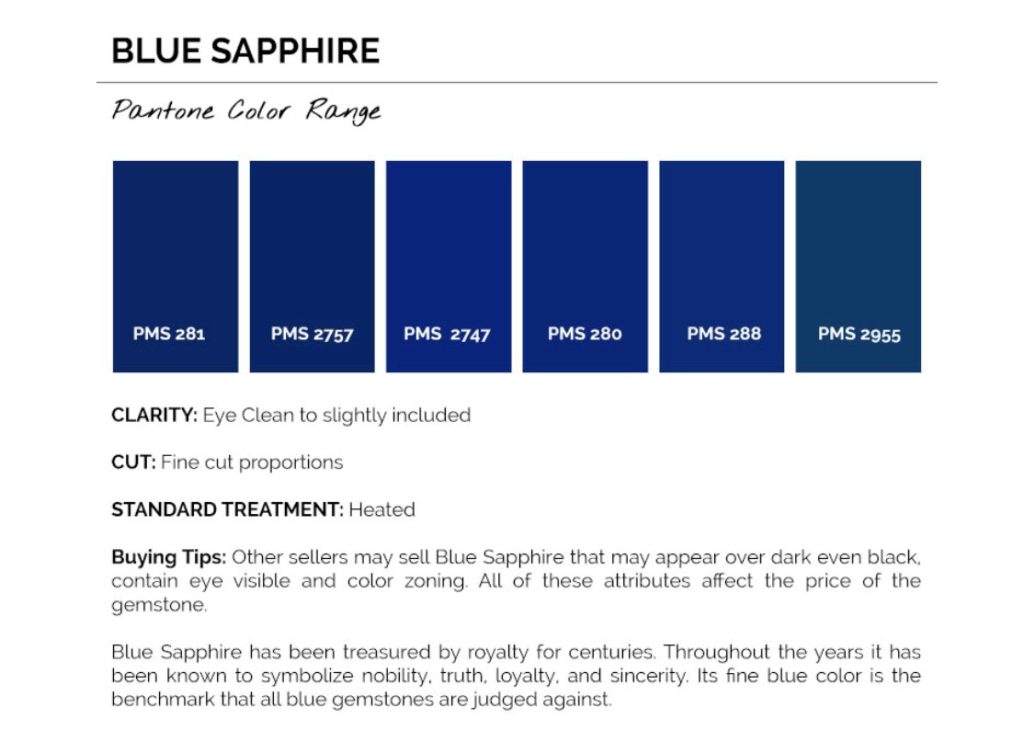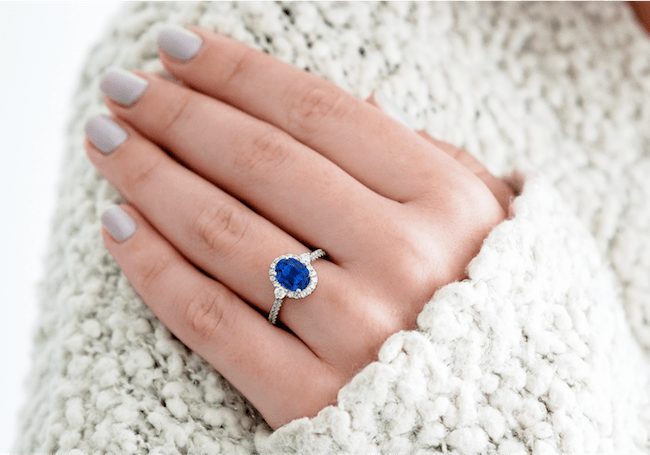
How to Choose a Blue Sapphire Engagement Ring
Passionately romantic. Traditional but different. Deeply symbolic. Sapphire engagement rings are a British royal tradition that’s become increasingly popular in the United States too. The blue sapphire halo engagement ring worn by Princess Diana and Kate Middleton has inspired brides all over the world to dream of wearing something blue on their ring fingers.
The original “true blue,” sapphires symbolize honesty and faithfulness, making them the perfect gemstone choice for an engagement ring. They are also beguilingly beautiful, especially sapphires with the deep rich blue of the ocean. Sapphire rings are durable, too, with a hardness of 9 on the Mohs scale, second only to diamond
Buying a blue sapphire engagement ring is more of an art than a science. Without the standardized letters and numbers of diamond grading report, choosing the right blue sapphire can seem confusing. The random grading schemes some jewelers use to describe gemstone quality just aren’t helpful because there is no impartial standard for AAA or 7 or any grade for color or quality.
Feeling blue? We can help. Here are six practical tips on finding the perfect sapphire engagement ring to symbolize your love.
1. Color is the Only C That Really Matters
Although cut and clarity make a blue sapphire more beautiful, color is by far the most important value factor for a sapphire ring. The most valuable blue sapphire hue is a vivid, rich and saturated medium blue. Jewelers often describe it as royal blue or cornflower blue.
At RockHer, we’ve matched our preferred blue sapphire colors to Pantone’s system to give our customers a good reference for the subtle differences in hue of the fine quality sapphires we carry. You can use these color references to communicate the sapphire color you find most beautiful.
Because the color of blue sapphire is so strong, inclusions and haziness don’t distract the eye as much as they would in a colorless gemstone and so don’t have as much affect on value. We look for a lively sparkling cut sapphire that sparkles across the stone with no flat or lifeless areas.
2. Don’t Fall Into the Origin Trap
Over the years, jewelers and gem dealers have used the names of the countries and mines where sapphire is found as a kind of shorthand for describing specific colors. But today, new deposits and new ways of heating sapphire to maximize its color have made most of these distinctions much less important. Today the best sources for beautiful sapphires are Sri Lanka and Madagascar, which both produce gemstones with a rich royal hue.
If you are buying a very important sapphire at auction, paying five or six figures, you should have the gemstone’s country of origin documented by a gemological laboratory because blue sapphires from the famous historical sources Kashmir and, to a lesser extent Burma, command a premium. So do sapphires that are certified as non-heated by a reputable gemological lab. For everyone else, nothing is more important than color. One thing has never changed: country of origin is never a guarantee of gemstone quality: the most famous mines produce beautiful gemstones and worthless rocks.
3. Consider Starting with the Gem
At RockHer, we’ve created countless custom blue sapphire engagement rings. Why custom? Fine sapphires are always one-of-a-kind so many customers prefer to start with the sapphire of their dreams and build the ideal ring around it rather than start with a setting and look for the best available sapphire that fits. When you create a custom ring we will find you the best sapphire we can and design a ring that fits it and your style. You can choose white gold, yellow gold, rose gold or a combination. And we can source any size or shape sapphire you want: you’re not limited by the sizes and shapes we currently have in our online store. We’re also fans of pink sapphire engagement rings, purple sapphire rings and yellow sapphire rings: sapphires come in a rainbow of beautiful shades beyond blue.
4. Think Size, Not Just Carat Weight
Sapphires aren’t the same dimensions as diamonds of the same weight. They have a higher specific gravity, the gemological term for density, so they are smaller than a diamond of the same carat weight. Corundum, the mineral that includes both sapphire and ruby, has a specific gravity of about 4.00. Diamond’s specific gravity is much lower: 3.52. That means a sapphire of the exact same dimensions of a diamond weighs about 14 percent more.
And because the intensity of a sapphire’s color is the most important value factor, sapphires are often cut deeper than an equivalent diamond too. All this means that you can expect a round brilliant one-carat diamond to be 6.5mm in diameter. A round brilliant one-carat sapphire will likely be a little bit less than 6mm. So when comparing gems, don’t just look at carat weight: make sure you look at dimensions too.
5. Pick a Cushion or Oval Sapphire
Although more than half of all the diamond rings are round brilliants, sapphires are much more likely to be ovals or cushion cuts than rounds. These shapes suit the rough crystal shape of sapphire better and accentuate its color. You’ll have many more sapphires to choose from if you are looking for an oval sapphire or cushion cut sapphire than you will if you are looking for a round sapphire, particularly in larger sizes. Emerald cut sapphire rings are also very striking.
6. Don’t Forget the Diamonds
There’s a reason why Princess Diana's and Kate Middleton's famous blue sapphire engagement ring has a diamond halo around the center gem: diamonds help to light up the blue color of sapphire and let it shine. Consider choosing a halo engagement ring style or three stone engagement ring with accent diamonds to make sure that you maximize the beauty of your blue sapphire.
Want to learn more about blue sapphire? Go in depth on this beautiful blue gem in our Blue Sapphire Buyer’s Guide.


